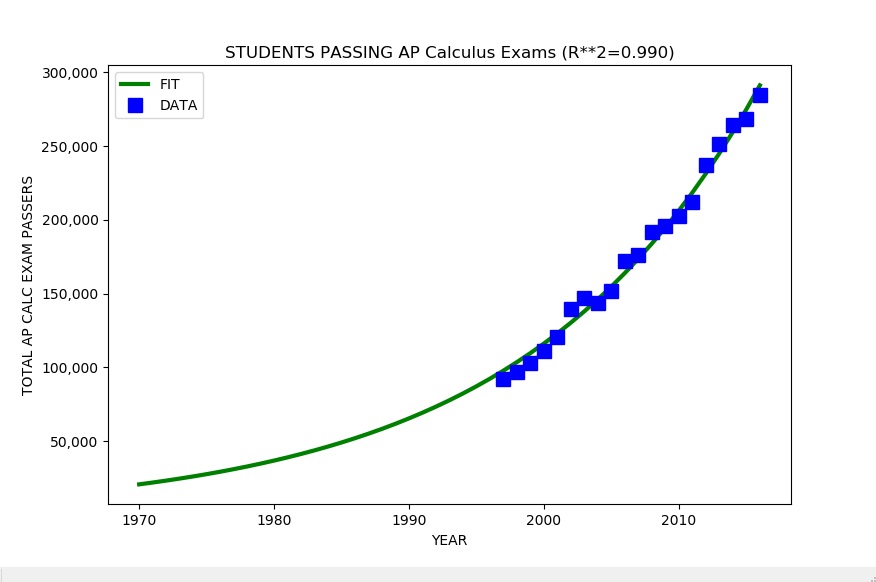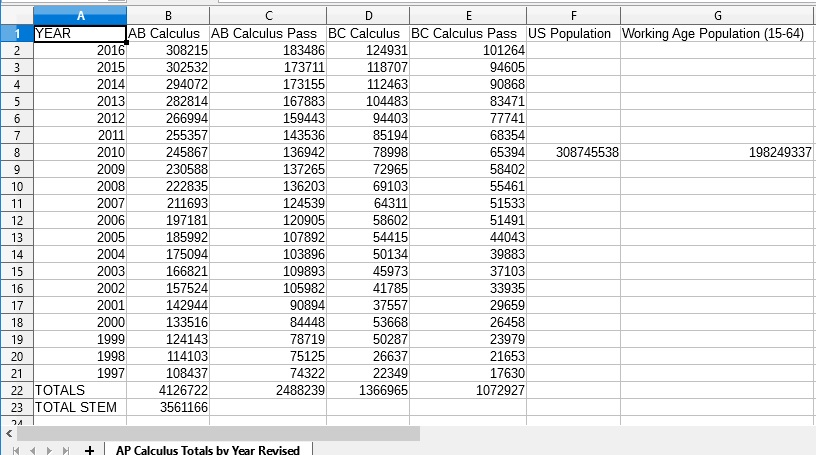
This is a followup to my previous post “A Skeptical Look at STEM Shortage Numbers”. I was able to decipher all the archived data on Advanced Placement (AP) Calculus exams on the College Board web site back to 1997, twenty-one years ago. My previous numbers were from 2002 to 2016 due to harder to decipher formatting of the archived data in 1997 through 2001. This adds an additional five years to the actual data.

Repeating my analysis with the new improved numbers gives the following results (see plot above as well):
TOTAL Employed Scientists and Engineers in 2016: 6,900,000.0
ESTIMATED TOTAL PASSING AP CALCULUS SINCE 1970: 4,869,476
ACTUAL TOTAL FROM 1997 to 2016 (College Board Data): 3,561,166.0
ESTIMATED FUTURE STUDENTS (2016 to 2026): 4,337,880
ANNUAL GROWTH RATE OF STUDENTS PASSING AP CALCULUS: 5.9%
US POPULATION GROWTH RATE (2016): 0.7 %
Rapid Growth in Students Taking and Passing AP Calculus
I added an estimate of the annual percent increase in the number of US students taking and passing the AP Calculus exams to the analysis. The analysis shows a steady rapid growth of almost six (5.9) percent per year since 1997. This is much higher than the annual population growth rate in the United States (0.7 percent in 2016).
(C) 2018 by John F. McGowan, Ph.D.
About Me
John F. McGowan, Ph.D. solves problems using mathematics and mathematical software, including developing gesture recognition for touch devices, video compression and speech recognition technologies. He has extensive experience developing software in C, C++, MATLAB, Python, Visual Basic and many other programming languages. He has been a Visiting Scholar at HP Labs developing computer vision algorithms and software for mobile devices. He has worked as a contractor at NASA Ames Research Center involved in the research and development of image and video processing algorithms and technology. He has published articles on the origin and evolution of life, the exploration of Mars (anticipating the discovery of methane on Mars), and cheap access to space. He has a Ph.D. in physics from the University of Illinois at Urbana-Champaign and a B.S. in physics from the California Institute of Technology (Caltech).
